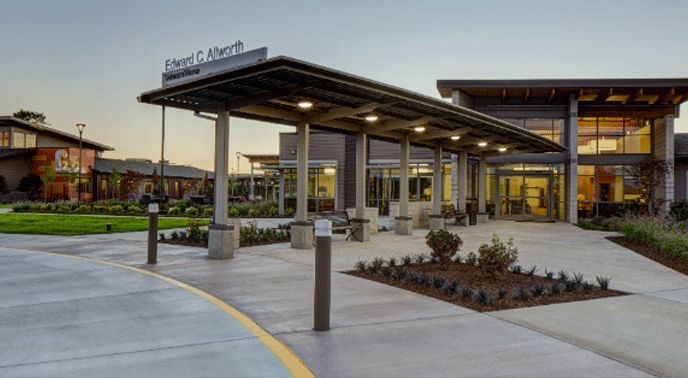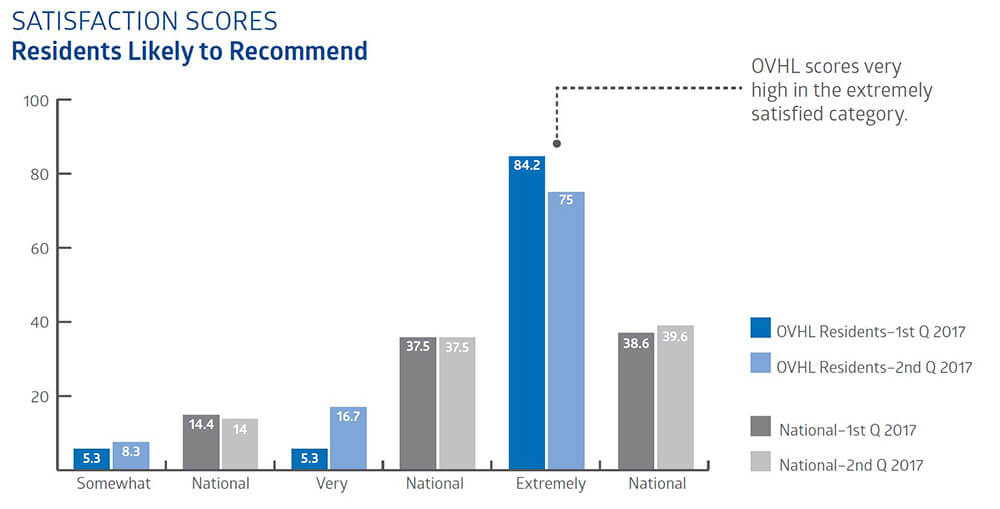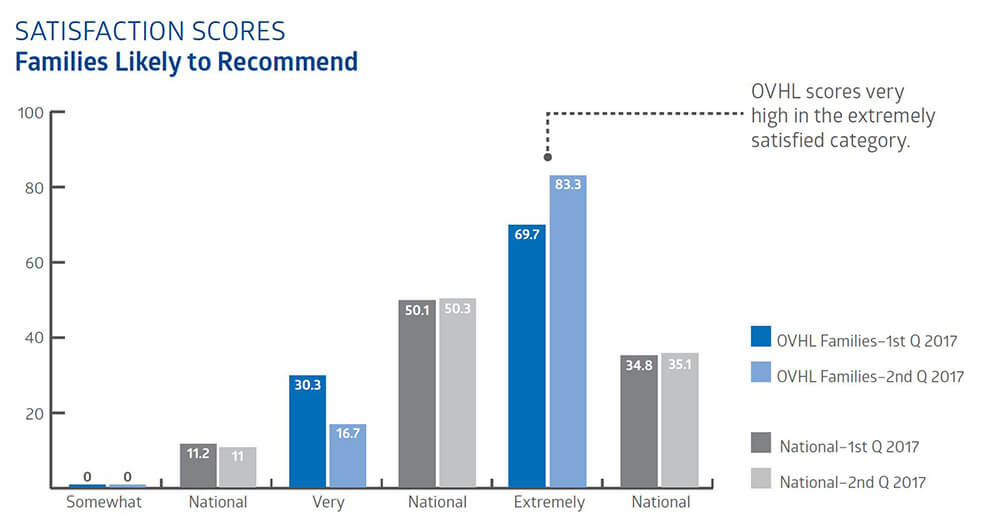customer story


When we opened our facility in 2014 our main objective was to establish a robust performance improvement program with an emphasis on resident and family satisfaction. We also wanted to gather and analyze key performance indicators to help improve our organization as a whole.
After implementing Quality Manager, formerly known as abaqis® we noticed very high resident and family satisfaction scores. In fact, we consistently score at least 30 percentage points higher than the national average in resident satisfaction. The Quality Manager system also prepares us for surveys. We are confident at survey time because we know Quality Manager utilizes a combination of interviews, observations and record reviews comprehensively assess our compliance against the full regulation, and identifies the regulatory areas where we should focus our quality improvement efforts. With Quality Manager, we are confident that we are always ready for survey.
Oregon Veterans’ Home Lebanon (OVHL) is located in Linn County, in the city of Lebanon, OR. It is a rural area in the Northwest part of the state with a population of approximately 16,000. Our campus, which is located on 12 acres adjacent to Samaritan Lebanon Community Hospital, provides short-term rehabilitation, memory care and long-term care for eligible U.S. military veterans, spouses of veterans, and parents of veterans who died in war-time service (Gold Star Parents).
Our communities, or neighborhoods, each consist of three houses, and each house accommodates up to 14 residents. Out of 154 beds, 42 are designated for memory care. We also provide short-term rehabilitation to about three percent of our veterans. The majority of our veterans, however, stay with us for long-term care, which is the main driver of our organizational success.
Our facility opened in 2014, and our main challenges were putting systems in place, such as our performance improvement systems. We needed to identify the benefits that quality improvement could bring to our facility. From there, we prioritized the most important quality improvements and established realistic, obtainable goals.
We value our veterans and their families, and we strive to provide the highest quality of care for them on a daily basis. Our overall goal was to develop a system where customer focus is key. We also wanted to gather and analyze key performance indicators to help improve our organization as a whole and provide excellent customer service.
Seeing that OVHL was a new facility, it made sense to put the Quality Management System in place to help us meet our goals. The Quality Manager system uses a combination of resident interviews, observations and record reviews to provide actionable data that identifies the regulatory areas where you should focus your quality improvement efforts. We were already familiar with the program because most of us had used it at previous facilities.
The key elements in our performance improvement system include well-defined use of Quality Manager and its Quality Assurance Performance Improvement (QAPI) programs. We collect and trend data against established benchmarks and create Performance Improvement Teams (PIT) to address results falling below our goals. We use a variety of techniques, including root cause analysis (RCA) and the Plan, Do, Study, Act Model (PDSA).
We also follow the Malcolm Baldrige framework because it helps us work toward a goal of excellence in our field. We just received the Bronze award this year, and we are in the process of applying for the National Silver Quality award.
The Quality Manager program has been well received because the staff sees the benefits of how it helps them get to know the veterans and their families better, and how it helps prepare for survey. To begin rolling out Quality Manager, we started with a core team and have expanded as we have grown. We participated in the initial online training and education, and as Quality Enhancement Coordinator (QEC), I train new staff and provide ongoing training for current staff on Quality Manager updates.
We currently have about 20 active staff members using Quality Manager. The staff enjoys asking the veterans and their families questions because it lets us know where we are doing well and where we may need to improve. Issues come up during the Quality Manager interviews that may not come up in care conferences or at other times. The interviews spark conversations to help resolve any concerns and give our veterans another way to express their needs and wants. For example, it’s an opportunity for the veteran or family to be complimentary of the care they receive from staff. The surveys also let nursing staff know that they may need to address pain better, or inform social services they need to make a dental or hearing appointment for a veteran. Usually staff find it informative and helpful as we gather data and share findings. It also better prepares us for survey, which we all find important.
Our Process
Each quarter we divide the Stage 1 and Stage 2 random samples among our 20 trained staff members who each receive a deadline for completion. The information is captured using laptop computers. Stage 1 consists of mostly department managers, nursing and social services. As Quality Enhancement Coordinator (QEC), I complete most of Stage 2, along with our nurse case managers and social services. The results are sent to all of our staff via email. The changes are implemented through follow up investigations and PIP teams set up to address any concerns. We also discuss Quality Manager as needed in our all-staff meetings and daily IDT meetings with department managers.
The Quality Manager system is a key factor in preparing for survey and a constant way of keeping up with things that may come up at survey time. It is a great tool to help prevent survey tags and issues because it allows us to address concerns as they come up and put interventions in place before a survey. Resolving concerns in advance improves our survey outcomes and better prepares and educates our staff on the survey process. And because Quality Manager assesses our compliance with the full regulation set forth in the Final Rule, we are confident about our ability to succeed in the new Hybrid Survey process, as well.
The Quality Manager QAPI platform helps us identify areas for improvement and gives direction for establishing further investigations, PIP teams and training/education. Also, the built-in QAPI and PIP tools also allow us to track the progress of our quality improvements.
Most of our veterans don’t mind being interviewed and answering Quality Manager questions. In fact, some see it as a time to discuss issues or concerns, and some see it as a time to give compliments to staff.
We take any adverse responses seriously by investigating, responding and resolving those concerns as soon as possible. Built-in graphing tools illustrate quarterly trends, allowing us to assign a PIP team to help resolve any downward trends, such as making sure everyone has at least an annual dental visit, or offering special activities that meet specific resident needs as examples.
Our Quality Manager interview questions about activities have allowed us to plan meaningful outings for our veterans. For example, one veteran, who is a retired flight nurse, said she had flown on just about every type of aircraft except a helicopter. So the activities department set up a trip for her with a local helicopter service, and she was able to fulfill that wish.
Another veteran had fond memories of catching crab along the Pacific Coast in Newport. So we set up a group crabbing trip to Newport. He got to go crabbing, and share the experience with some of his friends at our home. Afterward, they all enjoyed a crab feast as well. They spent the rest of the day sharing fishing and crabbing stories with staff and fellow veterans.
Terri Silkett has been working in healthcare her entire career. Before accepting her current role as Quality Enhancement Coordinator for Oregon Veteran’s Home Lebanon (OVHL), she managed the Delta Memory Care Program and Social Services. Prior to joining OVHL, she served as Social Service Director for Pacific Health and Rehab. Earlier in her career, she worked as an EMT and emergency room tech.